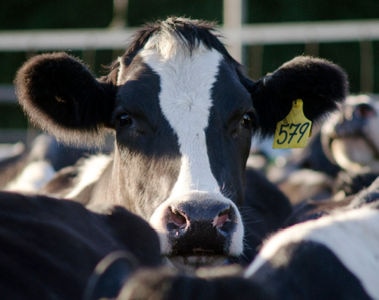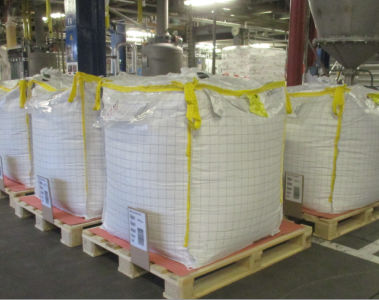Bierer, T. L., N. R. Merchen, and J. W. Erdman Jr. 1995. Comparative absorption and transport of five commoncarotenoids in preruminant calves. J. Nutr. 125, 1569–1577.
Blaner, W. S., Obunike, J. C., Kurlandsky, S. B., AI-Haideri M, Piantedosi, R., Deckelbaum, R. J., Goldberg, I. J. 1994. Lipoprotein lipase hydrolysis of retinyl ester. J. Biol. Chem 269:16559-16565.
Bonet, M. L., J. Ribot, and F. Felipe et al. Vitamin A and the regulation of fat reserves. CMLS, Cell. Mol. Life Sci. 60, 1311–1321 (2003). https://doi.org/10.1007/s00018-003-2290-x
Bryant, T. C., J. J. Wagner, J. D. Tatum, M. L. Galyean, R. V. Anthony, and T. E. Engle. 2010. Effect of dietary supplemental vitamin A concentration on performance, carcass merit, serum metabolites, and lipogenic enzyme activity in yearling beef steers. J. Anim. Sci. 2010. 88:1465–1478.
Calsimiglia, S. Oviedo-Rondon, E.O., Tamassia, L., Litta, G. and Hernandez, J. M. Optimum Vitamin Nutrition. OVN Vitamin supplementation guidelines 2022.
Chorfi, Y. 2010 «Impact of peripartum beta-carotenemia on subsequent reproductive performance in Holstein Dairy Cows (personal communication).
Church. D. C. The Ruminant Animal. Digestive physiology and nutrition of ruminants. 1976. Oregan State University. CME feeder cattle index. July 2025. Accessed July 31, 2025. Feeder Cattle Prices and Feeder Cattle Futures Prices - Barchart.com
Gannon, B. M., C. Jones, & S. Mehta (2020). Vitamin A Requirements in Pregnancy and Lactation. Current developments in nutrition, 4(10), nzaa142. https://doi.org/10.1093/cdn/nzaa142
Gibb, D. J., Van Herk, F. H., Mir, P. S., Loerch, S. and McAllister, T. A. 2011. Removal of supplemental vitamin A from barley-based diets improves marbling in feedlot heifers. Can. J. Anim. Sci. 91: 669674. T
Gorocica-Buenfil, M. A. F. L. Fluharty, T. Bohn, S. J. Schwartz, and S. C. Loerch. 2007c. Effect of low vitamin A diets with high-moisture or dry corn on marbling and adipose tissue fatty acid composition of beef steers. J. Anim. Sci. 85:3355–3366.
Hida, Y., T. Kawada, S. Kayahashi, T. Ishihara, and T. Fushiki. 1998. Counteraction of retinoic acid and 1,25-dihydroxyvitamin D3 on up-regulation of adipocyte differentiation with PPARγ ligand, an antidiabetic thiazolidinedione, in 3T3-L1 cells. Life Sci. 62:205.
Hui J, Li L, Li R, Wu M, Yang Y, Wang J, Fan Y, Zheng X. 2020. Effects of supplementation with β-carotene on the growth performance and intestinal mucosal barriers in layer-type cockerels. Anim Sci J. 91(1): doi:10.1111/asj.13344
Ikeda, 2005. The Roles of Vitamin A for Cytoplasmic Maturation of Bovine Oocytes. Journal of Reproduction and Development, Vol. 51, No. 1, 2005 jrd51_1_23(06)-3.fm.fm (jst.go.jp)
Kawada, T., N. Aoki, Y. Kamei, K. Maeshige, S. Nishiu, and E. Sugimoto. 1990. Comparative investigation of vitamins and their analogues on terminal differentiation, from preadipocytes to adipocytes, of 3T3-L1 cells. Comp. Biochem. Physiol. 96A:323.
Kawada, T., Y. Kamei, and E. Sugimoto. 1996. The possibility of active forms of vitamins A and D as suppressors on adipocyte development via ligand-dependent transcriptional regulators. Int. J. Obes. Relat. Metab. Disord. 20(Suppl. 3):S52-57.
Kawada, T., Y. Kamei, A. Fujita, Y. Hida, N. Takahashi, E. Sugimoto, and T. Fushiki. 2000. Carotenoids and retinoids as suppressors on adipocyte differentiation via nuclear receptors. Biofactors 13:103-109.Kucuk O, Sahin N, Sahin K. 2003. Supplemental zinc and vitamin A can alleviate negative effects of heat stress in broiler chickens. Biol Trace Elem Res. 94:225–236. doi:10.1385/BTER:94:3:225.
Kurlandsky, S. B., M. V. Gamble, R. Ramakrishnan, and W. S. Blaner. 1995. Plasma delivery of retinoic acid to tissues in the rat. J. Biol. Chem. 270:17850.
Léger, 2006 (in french). Anti-oxydants d’origine alimentaire : diversité, modes d’action anti-oxydante, interactions. OCL VOL. 13 N° 1 JANVIER-FE´VRIER 2006 Anti-oxydants d’origine alimentaire : diversité, modes d’action anti-oxydante, interactions | OCL - Oilseeds and fats, Crops and Lipids (ocl-journal.org)
Madureira, A. M. L., Pohler, K. G., Guida, T. G., Wagner, S. E., Cerri, R. L. A., & Vasconcelos, J. L. M. (2020). Association of concentrations of beta-carotene in plasma on pregnancy per artificial insemination and pregnancy loss in lactating Holstein cows. Theriogenology, 142, 216–221. https://doi.org/10.1016/j.theriogenology.2019.10.006
Murray, T., and T. R. Russell. 1980. Inhibition of adipose conversion of murine 3T3L1 cells by retinoic acid. J. Supramol. Struc. 14:255-266.Nade et al., 2003; National Research Council (NRC) (1996) Nutrient Requirements for Beef Cattle. 7th Edition, The National Academies Press, Washington DC.
NASEM. National Academies of Sciences, Engineering, and Medicine. 2016. Nutrient Requirements of Beef Cattle: Eighth Revised Edition. Washington, DC: The National Academies Press.
NASEM. National Academies of Sciences, Engineering, and Medicine. 2021. Nutrient Requirements of Dairy Cattle: Eighth Revised Edition. Washington, DC: The National Academies Press. https://doi.org/10.17226/25806.
Neville, B. W., C. S. Schauer, K. Karges, M. L. Gibson, M. M. Thompson, L. A. Kirschten, N. W. Dyer, P. T. Berg, and G. P. Lardy. 2010. Effect of thiamine concentration on animal health, feedlot performance, carcass characteristics, and ruminal hydrogen sulfide concentrations in lambs fed diets based on 60% distillers dried grains plus solubles. J. Anim. Sci. 88:2444–2455.Olson, J. A. (1988) Biological actions of carotenoids. J. Nutr. 119: 94–95Olkowski, A. A., S. R. Gooneratne, C. G. Rousseaux, and D. A. Christensen. 1992. Role of thiamine status in sulphur induced polyencephalomalacia in sheep. Res. Vet. Sci. 52:78–85.
Ohyama, M., K. Matsuda, S. Torii, T. Matsui, H. Yano, T. Kawada, and T. Ishihara. 1998. The interaction between vitamin A and thiazolidinedione on bovine adipocyte differentiation in primary culture. J. Anim. Sci. 76:61-65.
Pickworth, C. L., S. C. Loerch, and F. L. Fluharty. 2012. Restriction of vitamin A and D in beef cattle finishing diets on feedlot performance and adipose accretion. J. Anim. Sci. 90:1866-1878.
Prom, C. M. 2016. Supplementation of β-carotene during the close-up period on cows, colostrum and calves, MS Thesis. Department of Animal Sciences, University of Illinois at Urbana-Champaign (2016) http://hdl.handle.net/2142/93065, Accessed 26th Aug 2020
Pulse, R. 1994. Vitamin Levels in Animal Health: diagnostic data and bibliographies. Sherpa International.
Pyatt, N. A., and L. L. Berger. 2005. Review: Potential effects of vitamins A and D on marbling deposition in beef cattle. Prof. Anim. Sci. 21:174-181. 69
Rode, L. M., T. A. McAllister, and K. J. Cheng. 1990. Microbial degradation of vitamin A in rumen fluid from steers fed concentrate, hay or straw diets. Can. J. Anim. Sci. 70:227-233.
Samuelson, K. L., M. E. Hubbert, M. L. Galyean, and C. A. Löest. Nutritional recommendations of feedlot consulting nutritionists: The 2015 New Mexico State and Texas Tech University survey. J Anim Sci. 2016 Jun;94(6):2648-63. doi: 10.2527/jas.2016-0282. PMID: 27285940.
Schweigert, Florian J. et al. “Plasma and tissue concentrations of beta-carotene and vitamin A in rats fed beta-carotene in various fats of plant and animal origin.” Journal of environmental pathology, toxicology and oncology : official organ of the International Society for Environmental Toxicology and Cancer 19 1-2 (2000): 87-93.
Shastak, Y., Gordillo, A., and Pelletier, W. 2023. The relationship between vitamin A status and oxidative stress in animal production. Journal of Applied Animal Research, 51(1), 546–553. https://doi.org/10.1080/09712119.2023.2239319
Shi, H., Yan, S., Guo, Y., Shi, B., and Guo, X. 2018. The pre-protective effect of vitamin A on LPS-induced oxidative stress of bovine mammary epithelial cells. Italian Journal of Animal Science, 17(4), 959–966. https://doi.org/10.1080/1828051X.2018.1453757
Shurson, J., T. Salzer,, and D. Koehler. 1996. Metal-specific amino acid complexes, inorganic trace minerals effect on vitamin stability examined Feedstuffs, 68 (1996), pp. 13-23.
Smith, R. M. Cobalt. In: Mertz W, editor. Trace elements in human and animal nutrition. New York: Academic Press; 1987. p. 143–83.
Speer, H., H. Freetly, and M. E. Drewnoski. 2022. 11 Evaluating Relationships Between Plasma and Liver Retinol Concentrations in the Beef Cow and Calf, Journal of Animal Science, Volume 100, Issue Supplement_4, November 2022.
Speer, H., K. Wilke, and M. E. Drewnoski. 2023. 53 Effect of Vitamin A Supplementation During Gestation on Vitamin A Status of Beef Cows and Their Calves Managed in the Drylot, Journal of Animal Science, Volume 101, Issue Supplement_2, November 2023, Pages 49 50, https://doi.org/10.1093/jas/skad341.054
Tsutsumi, C., M. Okuno, L. Tannous, R. Piantedosi, M. Allan, D. S. Goodman, and W. S. Blaner. 1992. Retinoids and retinoid-binding protein expression in rat adipocytes. J. Biol. Chem. 267:1805.
Ward, E. H., and H. H. Patterson. 2004. Effects of thiamin supplementation on performance and health of growing steers consuming high sulfate water. Proc. West Sec. Am. Soc. Anim. Sci. 55:375–378.
Ward, A. K., J. J. McKinnon, S. Hendrick, and F. C. Buchanan. 2012. The impact of vitamin A restriction and ADH1C genotype on marbling in feedlot steers. J. Anim. Sci. 90:2476-2483.
Wellmann, K. B., J. Kim, P. M. Urso, Z. K. Smith, and B. J. Johnson. Evaluation of the dietary vitamin A requirement of finishing steers via systematic depletion and repletion, and its effects on performance and carcass characteristics. J Anim Sci. 2020 Sep 1;98(9):skaa266. doi: 10.1093/jas/skaa266. PMID: 32812033; PMCID: PMC7505414.
Xue, J. C., E. J. Schwarz, A. Chawla, and M. A. Lazar. 1996. Distinct stages in adipogenesis revealed by retinoid inhibition of differentiation after induction of PPARγ. Mol. Cell. Biol. 16:1567-1575.



